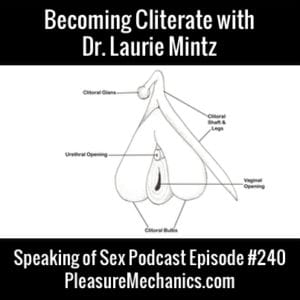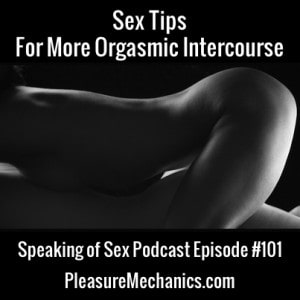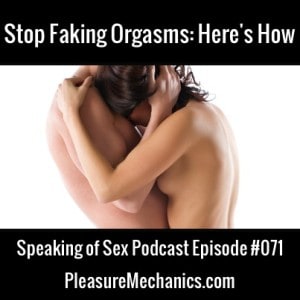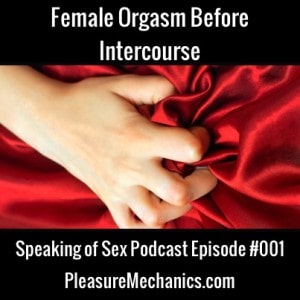Podcast: Play in new window | Download

Is simultaneous orgasm a myth? Or an attainable goal? In this episode we unpack the idea of simultaneous orgasms and give you the tools and techniques you need if you want to explore that elusive experience of simultaneous orgasm.
Simultaneous orgasm is often depicted as the ultimate climax for a sexual encounter. Hollywood tells us that if the chemistry is right, and both people are into the sex, their arousal cycles will magically align and they will reach orgasm at the very same moment and then collapse in a heaving heap of afterglow. This idea puts a lot of pressure on people and drains joy and pleasure out of otherwise great sexual experiences.
If the idea of “mismatched libido” is stressing you out in your relationship, be sure to check out our Rethinking Libido podcast series.
Simultaneous orgasms are possible, but they are not easy to orchestrate. If a simultaneous orgasm is something you want to shoot for, there are many skills to develop first. These skills include:
- Both partners learning the Edging Technique
- Both partners knowing and understanding their own unique arousal patterns
- Erotic communication in and out of bed
- Exploring different combinations of sexual activities to build arousal towards a mutual climax
- Syncing up orgasm
Some couples love having erotic goals to work towards. If it is exciting to you to have a goal and explore all the skills to get you there, go for it. But other people balk under pressure from an erotic goal, and that pressure can make orgasms hard to come by. So if it is a joyous, loving adventure for you to explore having simultaneous orgasms, go for it! Otherwise, enjoy the sex you are having and let go of any false orgasm hierarchies.
Here is the letter from a podcast listener that inspired this episode.
If you love the work that we do, show us some love at Patreon.com/PleasureMechanics
Subject: Nailed it!
Message Body:
You gals are just about the best thing I’ve come across. My partner and I have been together for 9 years. My desire went out the window with the birth of our daughter over 3 yrs ago. Binge-Listening to you talk while I work is a valuable, steady reminder of the importance of sex for a strong relationship. Nobody else is talking about this in the way you do. To continually be stressing how important touch, communication and pleasure are in a relationship. Your relentlessness in covering all that is important in love, has helped me change my approach on a fundamental level. Your continued offerings provide such depth and your constant perseverance in sharing these topics is necessary to provide a foundational shift of thinking. Your passion and knowledge is just overwhelmingly radical. My relationship is constantly shifting and GROWING! And I am absolutely giving you props for helping me to find a voice in my own growth.You have helped us communicate more specifically and more often about what we need and want from each other, which we are learning is CONSTANTLY required.
I share your podcast with almost everyone! And currently your most recent podcast about Gender (amazing) is being circulated among our high-school teachers. I save podcasts for my daughter to listen to when she’s a teenager, and straight-out talk about sex with just about everyone, as if it’s a normal part of One’s daily chit chat. You guys are breaking trail for a world of growth!
Last night we sent our daughter out for a sleepover, and had a sexy date where we left each other completely gassed as if we were teenagers again. But better!! At lunch-time, I playfully exposed his penis while he was on a work call and gave him a quick teaser suck before we ate and talked about what we wanted to do later. Then we went out for dinner, no underwear on either one of us, he snuck a lick of my pussy when nobody was around. Then we spent 3 hours of passionate foreplay mixed with a little penetration with champagne and chocolate fondue. Neither of us cumming until the very end (which I love because as soon as I cum I am ready for sleeping and the party is over). We finally went to bed (at an ungodly hour), and woke up early to have another go before getting up for work this morning.
So, my final note is a question: Do you have any advice for continuing after I orgasm? I feel after I orgasm, that all my sexual tension is gone, and I am no longer motivated to continue, and I just want it to be finished so we can move on with our day, or go to sleep. My preference is that we cum together, or at around the same time, which we may or may not coordinate. But I’m never disappointed nonetheless. It’s just extra special when it works out. Any tips?
Love you!!
Juicy





